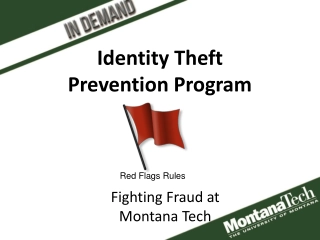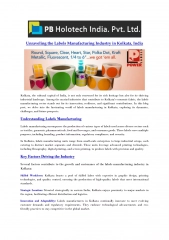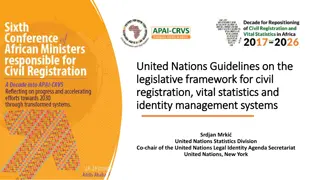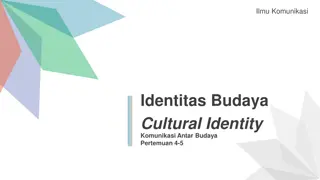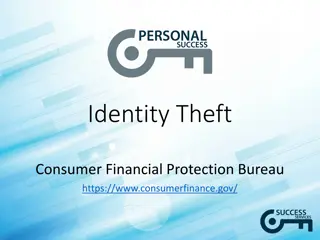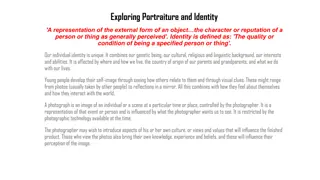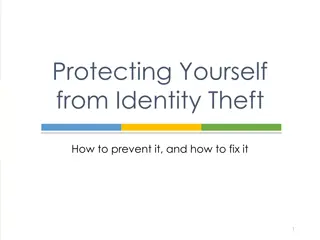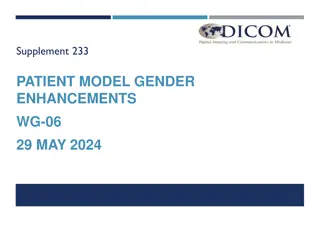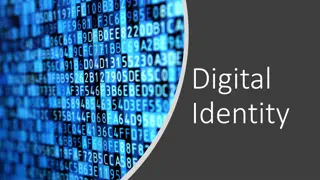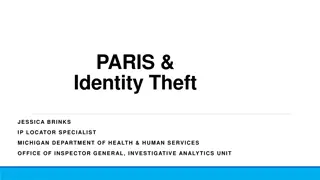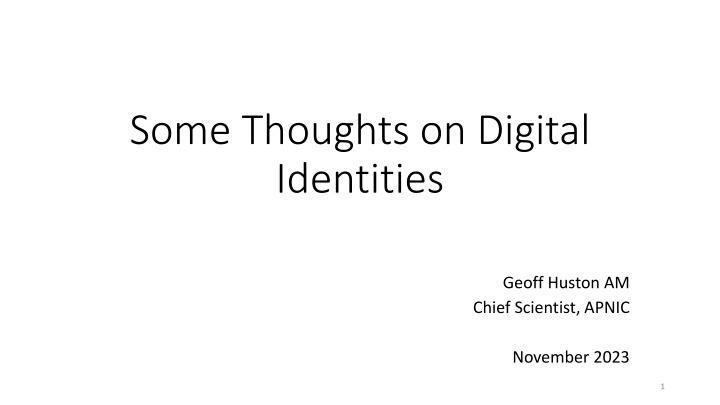
Insights on Identity Schemas for Digital Objects
Discover the key aspects of ideal identity schemas and pitfalls to avoid in digital identities, with a focus on using URLs as object identifiers. Learn why URLs may not be the ideal solution and explore alternative identity scheme choices.
Download Presentation

Please find below an Image/Link to download the presentation.
The content on the website is provided AS IS for your information and personal use only. It may not be sold, licensed, or shared on other websites without obtaining consent from the author. If you encounter any issues during the download, it is possible that the publisher has removed the file from their server.
You are allowed to download the files provided on this website for personal or commercial use, subject to the condition that they are used lawfully. All files are the property of their respective owners.
The content on the website is provided AS IS for your information and personal use only. It may not be sold, licensed, or shared on other websites without obtaining consent from the author.
E N D
Presentation Transcript
Some Thoughts on Digital Identities Geoff Huston AM Chief Scientist, APNIC November 2023 1
What do we want from an identity schema? Varying degrees of: Uniqueness Persistence Structure Clear Scope of Applicability Validity and Authenticity Clear line of derivation of authority Unambiguous resolution Identity is not a unilateral assertion it s a recognition of derived uniqueness within a chosen frame of reference 2
What should we avoid in an Identity schema? Varying degrees of: Uncoordinated self-assertion Arbitrary token value collisions Ill-defined temporal validity No coherent structure Unclear applicability Semantic overload Structural overload and complexity of the token space Cost 3
So What? All this is rather abstract Would an example help? 4
URLs as a Digital Object Identity schema We tend to use URLs as referential tokens to identity digital artefacts: what is synonymous with where in an object-oriented world where then becomes a viable non-clashing identifier scheme that also happens to dictate a resolution mechanism at the same time All we need to a methodical approach to whereand we re done! Easy, simple and used ubiquitously in our digital world 5
Whats the problem with URLs? URLs are where, not what If you go there then what you find thereis what I m referring to URLs describe a retrieval algorithm for an object instance, not an object identifier They are insecure, vulnerable to all kinds of abuse and inappropriate to our conventional methods of utilizing information They offer the comforting illusion of identity without imposing the actual cost of true integrity and authority 6
Identity Scheme Choices It s possible to inject an identity scheme into almost any part of a digital information system Application or Service Identities phone numbers, Skype IDs, email addresses, URLs, Google Search terms Structured Namespace identities DNS names, X.500 Distinguished Names, ISBNs, DOIs, Handles Abstract Identities Public Key, Hashed Public Key, Session Identifier, UUIDs In this context an identity is a token to allow multiple instantiations of an object to be recognised as belonging to a single equivalence class 7
Identity Scheme Choices Organised Namespaces Compound objects that may include identification of an issuer, subject, issuance, metadata DNS NAMES Unique chain of named issuer subject relationships to create a compound name and coupled resolution mechanisms E.164 Phone Numbers Historically: Country, Area, Provider, Subscriber Currently: ? X.500 names ? ISBNs Group, Publisher, Title, check PKIs (Certificates) Issuer, Subject, Subject Key, Attributes Identity as a bestowed token 8
Choices, Choices, Choices Disorganised Namespaces Low overhead access to uniqueness above all else Public Keys or Hash value of a Public Key Block of bits without internal structure Robustly provable provenance (via private key) No implicit association to object instances Can be replicated at will without dilution of its uniqueness No structured search, no defined resolution Identity as a proof of possession 9
Identity Resolution Issues Use of an Identity is to resolve it into useable attributes and values We can look at identity and resolution of identity as related, but distinct, concepts Is the identity resolution function: Absolute or relative to the query? Absolute or relative to the identity token issuer? Dynamic or static? Configured or negotiated? Deterministic? Temporal? Assured to terminate? Assuredly valid? Assuredly secure? 10
Identity Schema Conventional Construct a compound object that combines external identification realms of the identity issuer and the means to resolve the token in the context of the issuer Realm Issuer Subject Attribs 11
Identity Schema Compound Referential Use a series of identity elements with a set of resolution mechanisms Resolve the DNS string using conventional DNS resolution DNS Resolve the following parts in the context of a Named applications Service Pass these arguments to the local instance of application Args Apply these qualifiers to the application outcome Quals 12
Identity Schema Ephemeral Use an opportunistic identity as a means of resolving uniqueness in a limited context Entity Entity Identity Identity Token Exchange Identity Object A Object B Object C 13
Identity Scopes Is identity: What I call myself ? What I call myself in relation with others? What I call myself in relation with others today? What you call me ? What they use to call me ? All of the above? None of the above? 14
Upper-Level Issues of Identity Realms The significant effort and cost of supporting a new global unique token distribution system as an identity system The unintended side-effects of reusing some other existing token set as an identity component The issue of the relationship between identity and resolution mechanisms The overhead of identity resolution for application-level transactions The security issues in maintaining integrity of identity and integrity of resolution 15
* One identity scheme will not comfortably suit all forms of use: Information as objects vs information as an outcome of collaboration Associating the metadata with the object, not the identifier Disassociation of attribute discovery from the identity space Disassociation of object identification from object instantiation Bestowing attributes and permissions to an identified instance We use a collection of URLs, URIs, DNS names, DOIs, Digital Passes, Certificates, Keys Each have their areas of application, relative strengths and weaknesses And this collection of identity schemes will probably keep on expanding over time! * Let a hundred flowers bloom: let a hundred schools of thought contend Mao Zedong, 1956 16
Thank You! Questions? 17


